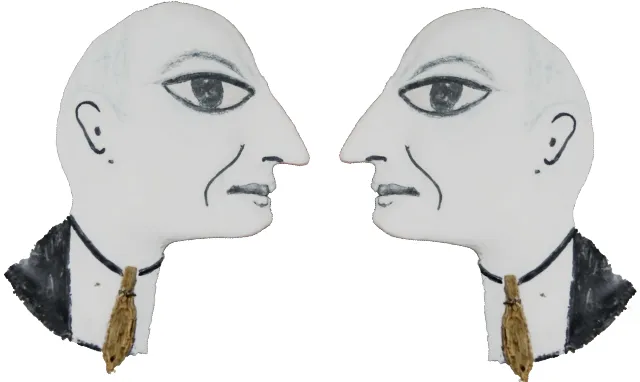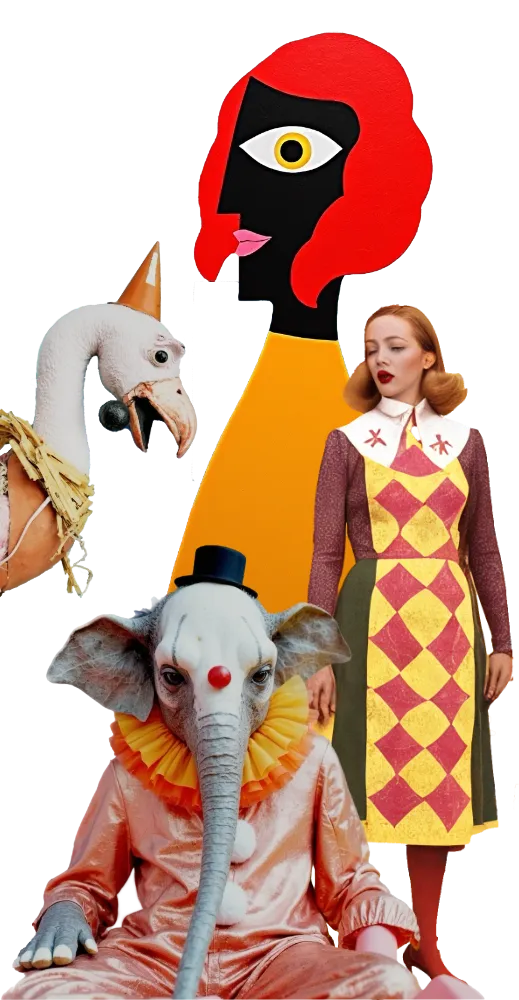Open Creative Studio 13.0 introduces a staggering number of new features and a radical redesign of some of its core sections and functions.
Let’s dive in!
New Sections and Pipelines
Open Creative Studio now includes a new Audio Generation Pipeline featuring text-to-audio (T2A) generation via the new ACE Step model and its LoRAs, as well as text-to-speech (TTS) generation and one-shot voice cloning via the new Chatterbox model.
This is just a first step. In the future, Open Creative Studio will be able to pair audio with video.

Open Creative Studio also includes a new Text Generation pipeline, featuring several new Prompt Enricher and Prompt Generator functions to generate audio tags, lyrics, and much more.
Over time, the system prompts used by these functions will be refined and improved.
In the future, this new pipeline will host new functions to manipulate text for content production from a source input like a book or an RSS feed.

Every prompt used throughout Open Creative Studio has been moved inside a new Prompts section.
Here, you’ll be able to set independent prompts for image generation (T2V and I2I), image upscaling, video generation (T2V and V2V), and audio generation (speech, audio tags, and lyrics).
This is where you’ll spend most of your time when using Open Creative Studio.
Redesigned Sections and Pipelines
Open Creative Studio now allows you to generate images with multiple AI models at the same time (FLUX.1, SD1.5, SDXL, SD3.5, Qwen Image 1, GPT-Image-1) and process their output in the Image Enhancement pipeline sequentially.
This means, for example, that you can upscale all four images with SUPIR in one single operation.
If no image generator is active, an image uploaded via the Image Uploader function will be used as a fallback.
This approach allows you to use Image Enhancement pipeline functions to improve pre-existing images.

The Image Generation pipeline now features separate functions for SDXL and SD1.5. No more need to change dozens of settings to switch between SDXL and SD1.5.
Each subsection in the Image Generation pipeline now has ample space to configure and organize your LoRAs. LoRAs for SDXL and SD1.5 are no longer second-class citizens.

The Video Generation pipeline has been redesigned to accommodate up to 4 video modalities for each supported video generation model.
Also, the design of each Video Generation pipeline subsection has been redesigned to be consistent across video models.

The Front End section now lives just below the Control Panel section for easier access.
The Intermediate Images Saver function has been greatly expanded, and it’s now moved to the Auxiliar Functions section of Open Creative Studio.
A new Video Spec function has been added to the Control Panel section, so you can centrally set the size and the FPS of the videos to be generated.
Most of the other functions have been aggregated in a new Image Enhancement pipeline.

Open Creative Studio features a completely redesigned Control Panel section, where the switches are organized by focus: text generation, image generation, video generation, and audio generation.
The rest of the Control Panel section now features Formats & Specifications, where you define the formats of your images, audio, and videos, and a series of Loaders and Savers, where you define what images to upload, and you can see the outcome of your generations.

The Image Enhancement pipeline has been redesigned to feature separated RePainting and InPainting functions.
Redesigned Functions and Features
The Repainter (I2I) function now depends on the new FLUX.1 Kontext Dev model.
This extremely versatile model allows you to repaint source images, inpaint specific details, recolor, swap objects, merge multiple subjects, and more.
This extremely versatile model allows you to fully repaint source images, inpaint specific details, recolor old photos, swap objects, merge multiple subjects from different source images, transfer style, and more.
To facilitate some of these use cases, the Prompt for Repainter (I2I) function has been redesigned to include multiple predefined prompts.
For now, the existing Open Creative Studio functions dedicated to these use cases will remain. With time, as we understand the quality and prompt limitations of FLUX.1 Kontext Dev, we’ll revisit the decision.

The Image Comparer function now features the capability to also compare the image you just generated with the last image you generated, automatically loaded from your Output folder.

The Image/Video Uploader function has been split into separate Image Uploader and Video Uploader functions.

The Positive Prompt Builder function has been renamed to Prompt for T2I, and its design is completely revamped.
The Caption Generation function has been renamed Caption Generator for IPAdapter/Redux/I2V.
The Latent function has been renamed to Image Spec.
New Functions and Features
In the Video Generation Pipeline, Open Creative Studio now supports:
- WanVideo 2.2 for I2V, V2V, T2V, and FLF generation.
- Hunyuan Video for I2V generation.
- CogVideoX for T2V generation.
The new FLF modality allows you to define the first and last frames of your videos.

The Image Generation Pipeline section of Open Creative Studio now supports two new models:
- Qwen Image (QI1)
- OpenAI GPT-Image-1 (GI1)
You can generate images with QI1 or GI1 and then process them in the Image Enhancement pipeline, for example, to repaint them with a FLUX.1 LoRA.
Notice that, for the time being, the GI1 function requires an API key generated by a verified OpenAI account. If you already have an API key, but you are not a verified organization, this function will fail.

Open Creative Studio now features a new Lens Effect function in the Image Finishers section of the Image Enhancement pipeline.
With it, you can apply effects like lens distortion, chromatic aberration, or vignette. The lens distortion effect can also be applied in reverse to correct the natural distortion occurring in smartphone images.

Open Creative Studio features a new and simplified Image Saver node, part of the OCS Nodes suite.
By default, it’s configured to save the Open Creative Studio log in the EXIF UserComment metadata tag of all supported image formats (.png, .jpeg/jpg, .webp) so you can read it inside any image manipulation software that supports EXIF data.
Just like the previous Image Saver node, this new node also allows you to, optionally, save the entire workflow in the Extra metadata section of .png images.

The Image Finishers section of the Image Enhancement pipeline now features a new function: Image Resizer.
This function will resize an uploaded or generated image based on various criteria.

The Video Generation pipeline now features a new function: Source Resizer for I2V/V2V.
This function will resize every frame of a video uploaded via the Video Uploader function to match the dimensions specified in the Video Spec function.
This is useful to automatically format frames before V2V generation.

Every function in Open Creative Studio with a resizing capability has been redesigned to use a new all-in-one Image Resize node:
- Image Resizer (part of the Image Finishers functions)
- Source Resizer for I2V/V2V (part of the Video Manipulators function)
- Upscaler (Supir)
This new function is capable of resizing based on a target width or height (or both), a target scale factor, or a target resolution (in megapixels).

The Image Spec and Video Spec functions now feature three new OCS Nodes: Image Size (Local), Image Size (Cloud), and Video Size (Local).
They organize the target resolution of your images in a way that is more suitable for Open Creative Studio’s needs.

The OCS Nodes snapshot now installs the LoRA Manager package.
The node suite is not essential for the functioning of Open Creative Studio, but it provides a sophisticated and mature LoRA catalog functionality.

The Master Log function now also displays in the terminal the name of each LoRA used by each image generation model.

Every image generation pipeline (FLUX.1, SD1.5, SDXL, SD3.5), the RePainter and InPainter functions, the Object Swapper function, and the Face and Hand Refiner functions now use new Diffusion Model Loader and VAE Loader nodes.
These new nodes offer granular capability to define weight and compute dtypes, allowing you to use Open Creative Studio with resource-constrained computers in a much easier way.
These new nodes are also configured to automatically take advantage of Sage Attention if your machine is configured to use it.

Open Creative Studio features a new always-on Attention Mode function, which centralizes the configuration of the attention mode for all video models.
The default configuration is set to Scaled Dot Product Attention (sdpa), but you can change it to Sage Attention (sageattn) or Flash Attention (flash_attn), depending on how your machine is configured.

The Image Chooser function now features @chrisgoringe’s new Image Filter custom node suite in place of his old Image Picker, now deprecated.

The Face Swapper function now uses the SFW version of the Reactor custom node suite.
The previous version of this suite is not available anymore on GitHub.
Optimizations
The FLUX Configurator function has been reconfigured to increase the quality and crispness of images generated with FLUX.1 Dev.

The FLUX ControlNet functions Canny, Depth, and Pose have been reconfigured to best support the new FLUX.1-dev-ControlNet-Union-Pro-2.0 released by Shakker Labs.

Open Creative Studio now supports CFG Zero Star for FLUX, SD3.5L, and WanVideo (in all video modalities) to increase prompt adherence and output quality.
CFG Zero Star is enabled by default for both FLUX and SD3.5L.

Every Open Creative Studio function using the Florence-2 model (Caption Generator, Upscaler) is now configured to automatically convert its weights to the .safetensors format for faster loading.
Removed Functions and Features
The Prompt Tagger function has been temporarily removed while it’s being redesigned to work for each image generation pipeline independently.

The XYZ Plot function has been removed because the custom node suite it depends on has not been updated for months. The absence of this function greatly speeds up the loading of Open Creative Studio.
A stand-alone alternative is in the works.

